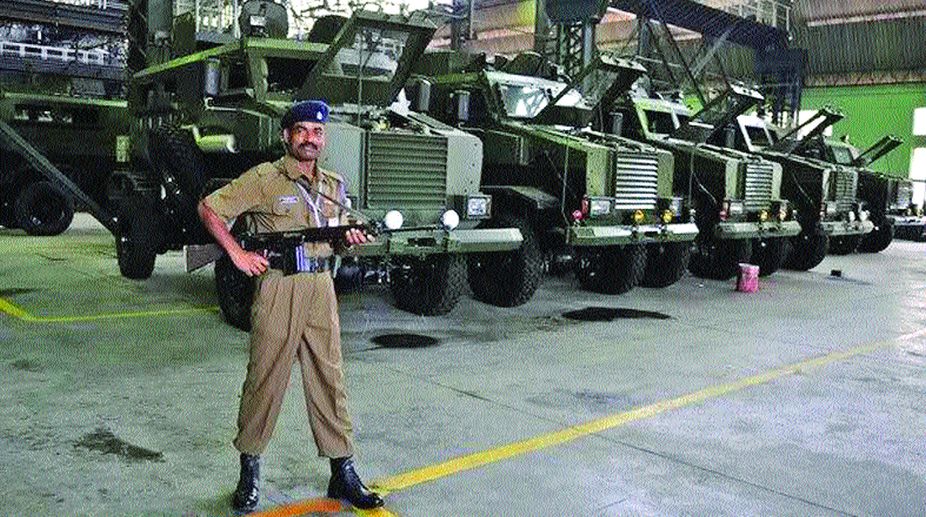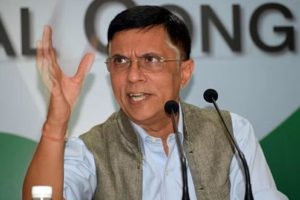The Vice Chief of the Army, Lieutenant General Sarath Chand, stated in a seminar a few days ago that Indian ordnance factories have not been able to keep pace with changing technologies as ‘there is no competition whatsoever’ and it is an ‘unsuccessful method of supporting our defence requirements’. He went on to add that ‘Pakistan probably has a better industrial base, as far as defence production is concerned, than our country. In fact, they export defence equipment abroad, definitely more than what we are doing.’ He was expressing his frustration with the functioning and quality of products of Indian ordnance factories. All who have dealt with our ordnance factories would more than agree with the Vice Chief.
Ordnance factories in India function under the Ordnance Factories Board (OFB), located in Kolkata. The OFB operates under the Ministry of Defence (MoD). There are over 40 ordnance factories in India, eighteen pre-independence and balance post- independence. Their range of products vary from guns and ammunition to clothing, tanks, vehicles, boots and parachutes. Almost all their products are manufactured for the military, hence they have no competition. Their profits and expenses flow from the products they supply to the military and are priced as per their requirements, with a willing MoD backing them. Costs are high as being government entities they have large overheads.
Advertisement
India has industries employing most modern technology, while OFB factories continue to function with outdated technology. The government seeks to encourage domestic industry, however the OFB remains the sole supplier to a large military market even for basic items, purchasing what it cannot produce itself to meet shortfalls. The quality of such goods is again doubtful. Items of far better quality and at cheaper rates are available in the market, but government orders compel the military to procure from the OFB, solely because they exist.
Most common use items including uniform material, boots, jerseys, blankets, socks and the like should be purchased on open tender, forcing the OFB to compete with civil suppliers, ensuring better quality. But that never happens in India. The quality is so poor that soldiers are compelled to purchase uniforms and accessories of right quality from the market.
With no competition and limited funds for modernisation, there is no desire for improvement. Ammunition accidents due to lack of quality checks and faulty production are frequent occurrences. There are regular reports of accidents during field firing linked to faulty fuses, resulting in loss of precious lives. The factories are never taken to task. In Devlali, post a firing accident in 2009-10 resulting in the death of a trainee officer, a special x-ray machine was brought in to screen all artillery fuses before firing. The numbers discovered to be faulty was beyond acceptable limits. How many such fuses exist in depots and are earmarked to be employed in war, remains unknown.
The incident at the Pulgaon ammunition depot last year, which claimed 20 lives including of two officers who died seeking to limit the blaze to few sheds thus saving lives, was a case of faulty ammunition and subsequent callousness of the concerned factory. The anti-tank mines were produced by Ammunition Factory Ambajhari, near Nagpur. Soon after their arrival in Pulgaon, they were observed to be leaking TNT. The mines were segregated into two sheds and the factory repeatedly approached to collect the faulty ammunition and rectify or destroy it. But the factory never responded.
This lackadaisical approach is common to most ordnance factories solely because they face no competition, are never accountable to the user and function directly under the MoD. The army has been approaching the MoD since the Pulgaon incident seeking action against those responsible for not collecting the faulty mines from the concerned factory, but the MoD refuses to move. Such accidents would continue to occur, unless the government acts and reconsiders its approach to ordnance factories.
The Vehicle Factory at Jabalpur (VFJ) collects Stallion vehicles manufactured by Ashok Leyland’s Hosur plant near Bengaluru in Completely Knocked Down (CKD) condition and transports these to Jabalpur for assembly. This adds to the cost as it involves unwarranted transportation solely for assembly. This is to ensure functioning of the factory. Increase in cost does not affect the MoD as it is a book transfer between different branches. Army objections are overridden. The government may enhance taxes for the public, but refuses to cut its own unnecessary costs.
Upgradation and overhaul of tanks and armoured vehicles at the Heavy Vehicle Factory, Avadi, is inordinately delayed. In many cases the cause has been listed as non-availability of spares. No action is ever taken to pull up those responsible and speed up delivery, while military preparedness bears the brunt. In the private sector, such delays would have meant heads rolling, but then, the private sector does not have a Godfather in the MoD.
These are only a few cases of low quality, poor management and wasteful expenditure. The OFB and its factories are in many cases the cause of the army having shortfalls. The CAG report on shortfall of ammunition blames the MoD. It is factories under them which need to produce (some ammunition may be imported, most is manufactured locally), but they are never pushed. With outdated technology, no desire to compete and no laid down targets, production levels are low. The factories could be compelled to increase production. But who will bell the cat?
It is surprising that the government could consider privatising Air India which still flies, but has never even considered privatizing or disposing the white elephant of the nation, its ordnance factories. I wonder if government inaction is because it fears the unions or is concerned with vote banks. An interesting line on the website of the OFB states, ‘undoubtedly, we are the force behind the armed forces’. The reality is just the opposite.
The writer is a retired Major-General of the Indian Army.











